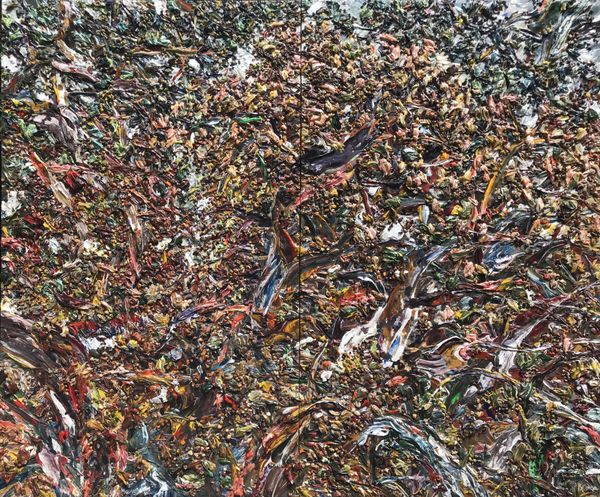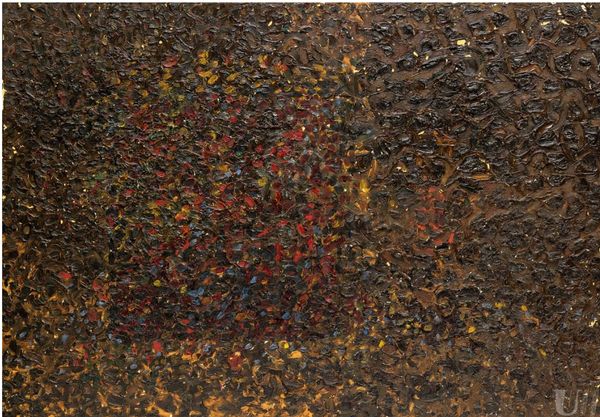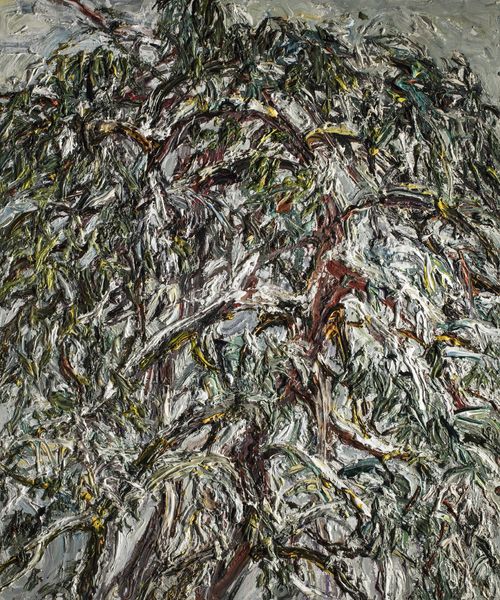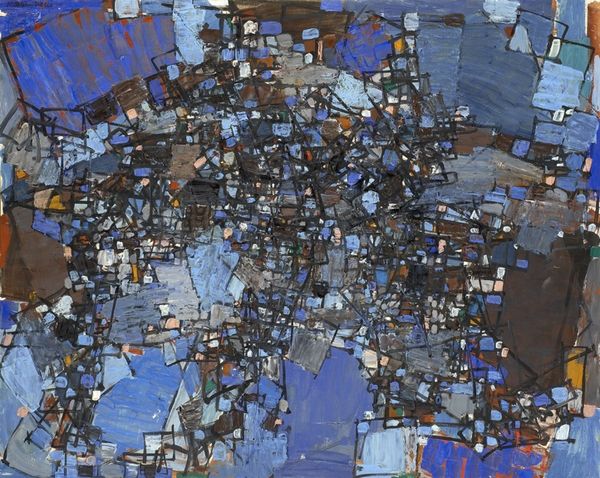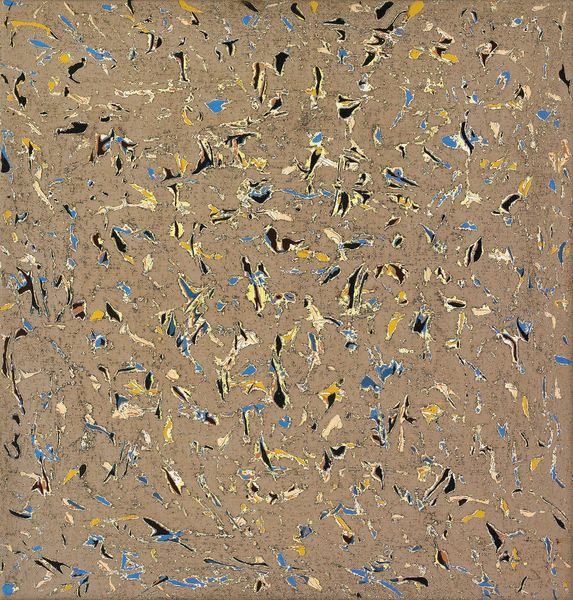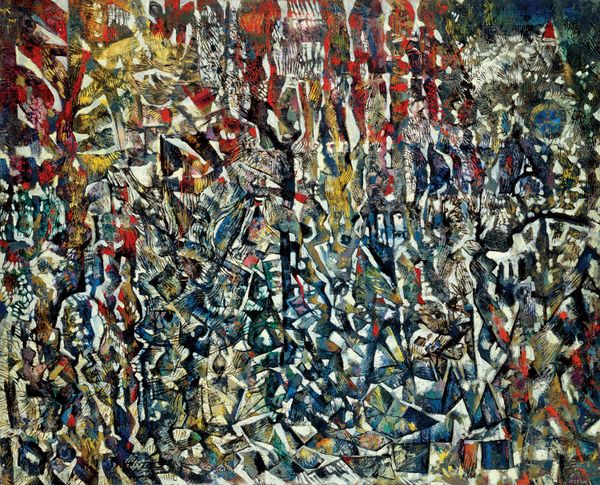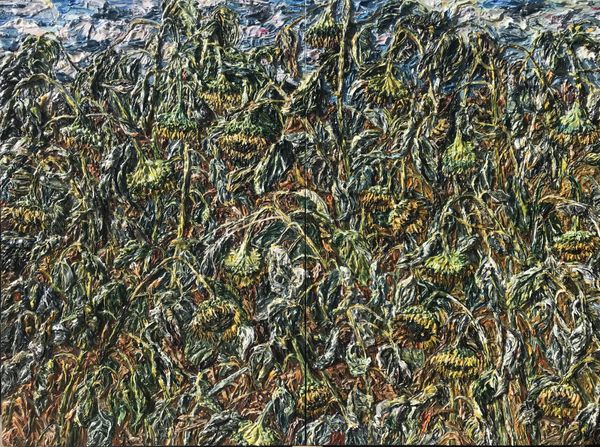
matter-painting, oil-paint, impasto
#
abstract-expressionism
#
abstract expressionism
#
matter-painting
#
oil-paint
#
impasto
#
abstraction
#
monochrome
Copyright: Alexandre Istrati,Fair Use
Editor: Here we have Alexandre Istrati's "Untitled" from 1960, made with oil paint and matter-painting techniques. It’s predominantly monochrome, and the impasto is so thick! I’m immediately drawn to the textures and the weight of the material itself. How do you interpret this work, focusing on its formal elements? Curator: The work offers an interesting study in surface and depth through impasto. The density of the paint application creates a topography. Observe how the light interacts with this built-up surface. The artist has harnessed the materiality of the paint itself. What compositional strategies do you notice in how Istrati organizes this visual information? Editor: It’s interesting you mention the composition! Initially, it felt chaotic, but the distribution of darker and lighter values creates a sort of… overall balance. It's not symmetrical, but somehow, it resolves itself. Is it perhaps an engagement with Abstract Expressionist ideals, just considering its monochromatic choice? Curator: Indeed. The lack of defined forms, coupled with the emphasis on process, situates this work within the discourse of Abstract Expressionism. Istrati challenges the very notion of representational space through abstract methods, where the artistic process is almost as essential as the result. Is it fair to say the color supports the lack of recognizable shape? Editor: Yes, absolutely! Focusing just on this limited palette amplifies the tactile experience, creating a cohesive visual statement with such restricted components. I see now the connection between the process, the materials, and its abstract meaning. Curator: Precisely. Istrati compels us to engage with the work on a purely sensory level. The artist pushes us to reconsider how meaning can be derived from the physical properties of art alone.
Comments
No comments
Be the first to comment and join the conversation on the ultimate creative platform.
